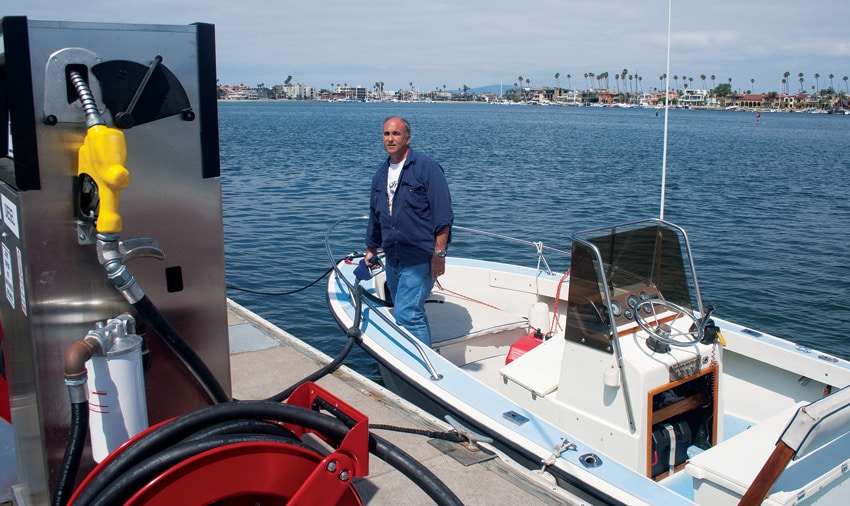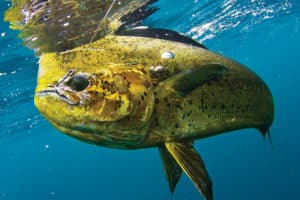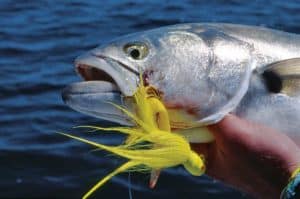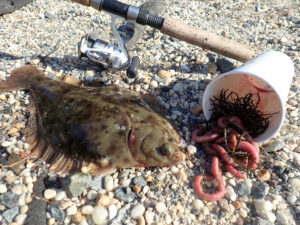
ehtanol in your boat
Despite wails of protest from the marine industry, ethanol-laced gasoline is here to stay. What’s more, percentages are likely to rise in the future, thanks to powerful lobbying efforts by U.S. ethanol producers.
A case in point was a recent ruling by the federal Environmental Protection Agency that increases the allowable level of ethanol in gasoline from 10 percent (E10) to 15 percent (E15).
That’s a big problem for boat owners, since no marine engine will operate reliably on anything over E10. In fact, the EPA agrees, and so E15 is not allowed for sale at fuel docks.
Yet, an estimated 90 percent of the 13 million registered boats in the U.S. are on trailers, and most of these are fueled at land-based gas stations.
What this means is that boating anglers must be more vigilant than ever, not only in avoiding gasoline containing more than 10 percent ethanol (such as E15 or E85 flex fuel), but also in taking precautions to avoid ethanol-related complications, even with E10. Here’s what you can do.
1. Check the Label
If you fuel your boat at a gas station, carefully check labels on the pump. Station operators will be required to label pumps dispensing E15, but the Chicago-based National Marine Manufacturers Association has been pushing for more explicit labeling requirements, according to Cindy Squires, chief counsel for the NMMA.
“The current labeling is neither strong enough nor clear enough to reflect the fact that E15 will damage marine engines and equipment,” says Squires.
The upshot: Never fill up with any fuel in excess of 10 percent ethanol. It might be the cheapest fuel at the station, but you will pay a high price later in repair costs.
2. Fuel at Busy Operators
Whether you gas up at a fuel dock or shoreside station, choose a busy operator. This is the best way to ensure the gasoline is fresh, and has not been sitting in storage tanks for several weeks and suffering from “phase separation” (which we will discuss shortly). If the fuel is questionable at all, find another operator.
3. Add a Fuel Treatment
There are many ethanol fuel treatments with brand names such as PhaseGuard4, Sierra eGuard, STA-BIL, StarTron and ValvTect — all are formulated to help prevent the ghastly phenomenon known as “phase separation.” This occurs because ethanol attracts and combines with water. If enough water comes along (about 0.5 percent of the fuel volume), the ethanol/water mix will separate from the gasoline, and settle to the bottom of the fuel tank in a soupy goop that can clog the fuel system and corrode engine components.
Marine fuel treatments can help stave off phase separation but only if the treatment is added immediately after filling up. These treatments can help hold an ethanol/water mix in solution with the gasoline longer, but not indefinitely.
Also, such treatments have little effect after phase separation has occurred. About your only option once the ethanol/water goop has settled out is to drain the fuel tank, and purge fuel-delivery components such as hoses and primer bulbs. You also might need to clean or replace components inside the engine such as electric fuel pumps, fuel injectors and high-pressure lines.
Dispose of old gasoline properly, and don’t put the goop-free fuel back in your tank. With no ethanol left, erstwhile 87-octane gas loses about three octane points, which can cause serious detonation problems in your engine.
4. Change Fuel Filters Often
Most saltwater fishing boats have canister-style water-separating fuel filters, but ethanol-laced gasoline has brought about new thinking when it comes to filter size and maintenance.
All major outboard-engine builders recommend the use of a 10-micron filter, and most suggest using the highest capacity filter you can fit in your boat to help contain as much water as possible before the filter becomes plugged and shuts off fuel to the engine. For this same reason, carrying spare filter canisters is also prudent.
Because of ethanol-laced fuel, newer maintenance schedules call for replacing the filter canister every 50 hours or six months, whichever comes first, as opposed to the traditional 100-hour/annual replacement schedule of years past.
5. Replace Old Fuel Hoses
Make sure all of your fuel lines and primer bulbs are the newer types designed to resist relatively high gasoline/ethanol blends. Bill Walker, assistant product manager for Teleflex Marine’s Shields Hoses, suggests the Shields Series 368 and Shields FireAcol 15 fuel hoses, both of which resist up to 85 percent ethanol.
“This resistance level is important, because a phase-separated solution can contain much more ethanol than E10 fuel — as much as 60 percent,” Walker points out. If allowed to sit in the lines, such levels of ethanol can soften, rot or delaminate older hoses and primer bulbs.
Boats and ethanol can coexist but not without some adjustments in the way we gas up, care for our fuel and maintain related components. It is a relatively small price to pay to stay on the water.
Running on E15
No marine engine today is built to operate reliably with more than 10 percent ethanol, but that will change in the future, according to David Greenwood, product-planning manager for Brea, California-based Suzuki Marine, which offers a full line of fourstroke outboards.
“While there is nothing out there today, marine engines will be developed that can perform safely and dependably on E15,” Greenwood says.
“There’s really no choice,” he adds, “because increasing ethanol levels in gasoline is becoming the norm. Will engines be built to run on it? Absolutely.”
How soon can we expect such engines? “I would say in about three to five years,” Greenwood estimates.








